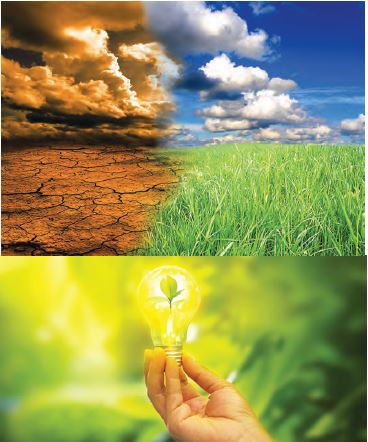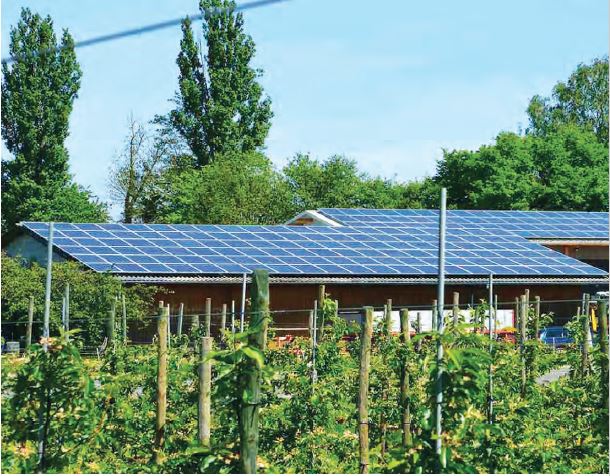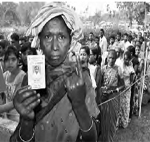 |
|
 |
STORY
DETAILS |
 |
|
| |
| |
 |
| Cover Story
|
 |
 |
| Textiles’ – the word brings up images of beautiful drapes – cotton, silk, chiffon, lace. Whether it is the material draped on the figurine of the lady f... |
|
 |
| |
read more... |
 |
|
 |
Lead Article
Textiles the word brings up images of beautiful drapes cotton, silk, chiffon, lace. Whether it is the material draped on the figurine of the lady from Mohenjadaro, the stylish drapes of Cleopatra, the ball dance gowns of the Victorian Era or the lovely dresses worn by our own queens and princesse...
read more... |
|
 |
| Articles |
 |
 |

|
|
Tapping Sustainable Energy Alternatives
|
|
|
The second lead article, which is also focus article, is written by Shri N Bhadran Nair. Citing a report of the World Health Organisation, the author has advocated for tapping sustainable energy alternatives
|

|

|

|

|
|
Financing Renewables in India
|
|
|
The third article is written by Shri P C Maithani, Adviser, Ministry of New and Renewable Energy. He has focussed on renewable energy resources
|

|

|

|
|
Steps to Achieve India’s Solar Potential
|
|
|
The special article is written by Sumant Sinha, Chairman and Managing Director of ReNew Power. He opines that India must also honour its global commitments on curbing greenhouse gas emissions
|

|

|
|
|
|
|
|
|
|
The Electoral Participation of Women
Lakshmi Iyer |
|
 The Women’s Reservation Bill, which seeks to reserve one-third of all seats in the Lok Sabha and the state legislatures for women, is yet to become law despite being passed by the Rajya Sabha in 2010 itself. Other pending reforms to the electoral system include the Constitution (110th Amendment) Bill for reserving half the seats in panchayats for women and the Constitution (112th Amendment) Bill reserving one-third of elected seats in municipalities for women. Will such changes to India’s electoral democracy in fact benefit women as a whole? How can women’s political representation be increased? In this essay, I provide some answers to these questions, based on rigorous empirical research. In this context, we should remember that India has a poor record on the treatment of women. The United Nations ranked India 134th out of 187 countries in its 2012 Gender Inequality Index. Several statistics bolster this fact. The 2011 population census of India shows only 940 women per 1000 men, a result of selective abortion, female infanticide and neglect of girl children. Only 65 per cent of women were literate, compared to 82 per cent of men. The Women’s Reservation Bill, which seeks to reserve one-third of all seats in the Lok Sabha and the state legislatures for women, is yet to become law despite being passed by the Rajya Sabha in 2010 itself. Other pending reforms to the electoral system include the Constitution (110th Amendment) Bill for reserving half the seats in panchayats for women and the Constitution (112th Amendment) Bill reserving one-third of elected seats in municipalities for women. Will such changes to India’s electoral democracy in fact benefit women as a whole? How can women’s political representation be increased? In this essay, I provide some answers to these questions, based on rigorous empirical research. In this context, we should remember that India has a poor record on the treatment of women. The United Nations ranked India 134th out of 187 countries in its 2012 Gender Inequality Index. Several statistics bolster this fact. The 2011 population census of India shows only 940 women per 1000 men, a result of selective abortion, female infanticide and neglect of girl children. Only 65 per cent of women were literate, compared to 82 per cent of men. |
|
|
|
|
|
|
|
|
|
|
 |

|
Regional Languages
|
 |
|
|
 |
|
Regular
Column |
|
J&K Window : |

|
|
Do you know? : What is Forensic Auditing |
Forensic auditing refers to the auditing with the main aim to employ accounting techniques and methods to gather evidence to investigate the crimes on financial front such as theft, fraud etc.

|
|
|
 |
|
 |
 |